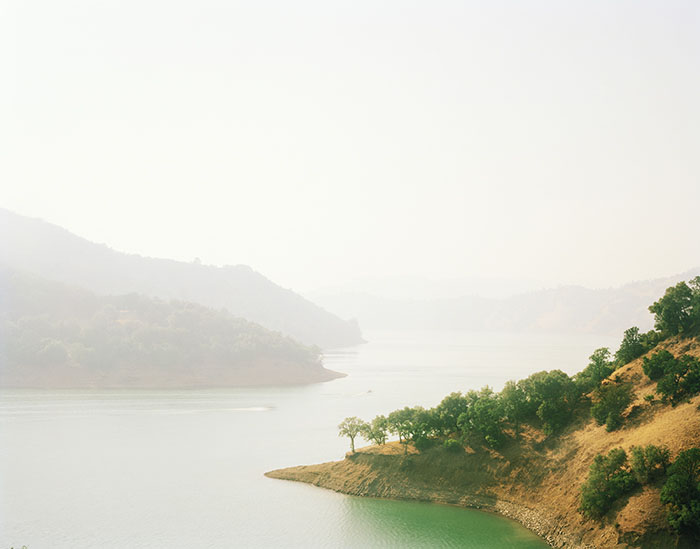 |
During the brushfires of 2008-09, when anyone who could stayed indoors, Youngsuk Suh (or “Young” as he is known among colleagues) was outside with a 4 x 5 film camera, recording images of places throughout the West that were engulfed in flames. Through the smoky haze, he photographed not only the visible features of the landscape, but also people in various pursuits of leisure and labor: bathing, hiking, boating, rafting and firefighting.
Contrary to appearances, these pictures are not part of an explicit environmental treatise. Rather, they are an attempt to get us to question received notions of landscape. Using the visual conceit of smoke, Young attempts to re-frame a variety of ideas about nature and culture that have run throughout American history. These range from the romantic impulse of Hudson River School painters to the socially engaged WPA-era pictures of Walker Evans, and from the fiercely polemical works of Robert Adams to the more open-ended existential studies of Richard Misrach. It’s also safe to say, given the preponderance of smoky vistas, that the artist’s Korean heritage and the traditions of Asian landscape painting play an equally strong role in this project.
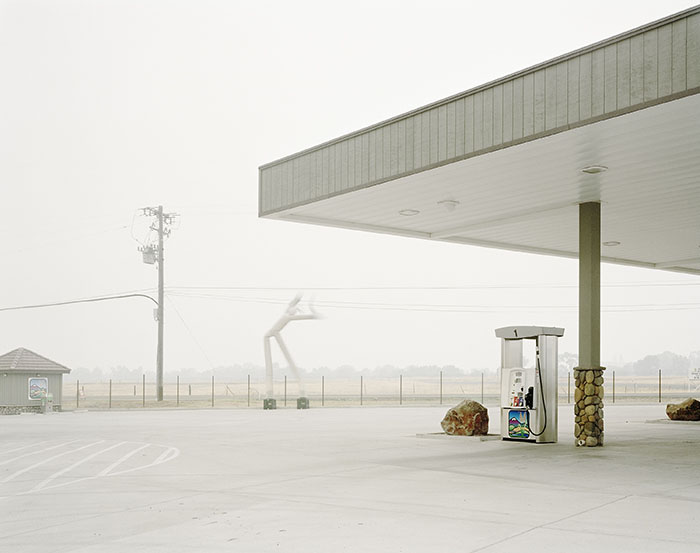 |
As such, Wildfires is a conversation across history that, without asserting a singular viewpoint, touches on the ways American landscape is used, abused, perceived and enjoyed. Irony, alienation, majesty and an inverted sense of the sublime infuse the dozen medium-sized (36 x 46”) photos on view. Their most distinguishing feature, apart from a persistent scrim, is the peculiar quality of the foliage: it has a fuzzy, almost pointillist texture that lends the images a physical presence that would otherwise be absent. As for people, you really have to look to find them, and in the screen views you see here, they are difficult to locate. Nevertheless, they and their surrogates (animals and signs) are the content bearers in these images.
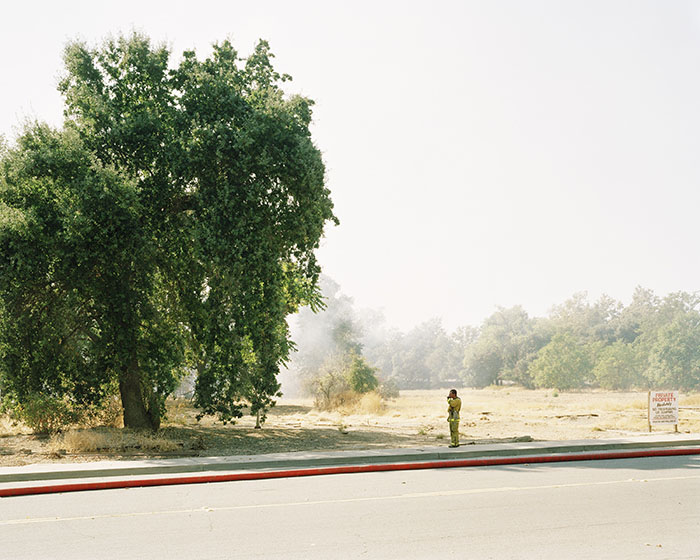 |
 |
Others, like Cigarette and Coffee employ the kind of simple ironies that have been staples of American street photography since Walker Evans. The first shows a firefighter in the midst of a smoke-filled scene dragging on a cigarette; the second is of a small roadside billboard for coffee. The heat of the beverage is represented by orange flames, a case of advertising foretelling real-life disaster.
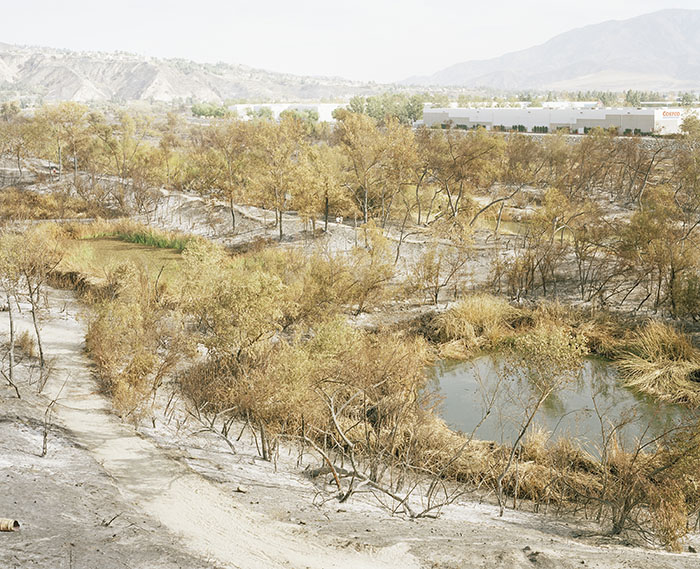 |
All of this falls squarely into the New Topographics mode, a style of image making that originated the ‘70s and focused on the impact of development. Conversation is a photo of a parched desert landscape with three people walking along a sandy, tree-lined trail. At the top right of the picture we see a series of sprawling, low-slung concrete buildings, one of which is a Costco. Seeing these elements in the same frame feels slightly surreal and yet they stand as resolute facts — one of the hallmarks the New Topographics movement.
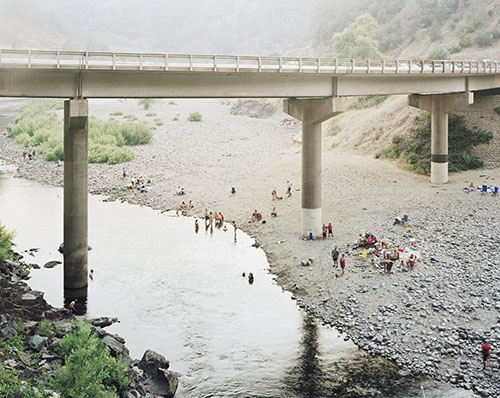 |
Scale and camera angle are not the only things that draw us into these pictures. Given the toxicity of the air, one wonders if the people in Young’s pictures are real or whether the photographer inserted them after-the-fact. (The artist assures that the pictures are, in fact, “straight”; the only exceptions are instances where he overlaid multiple negatives to add more people to scenes than actually appeared in any single frame.)
–DAVID M. ROTH
Youngsuk Suh, Wildfires @ Haines Gallery through August 20, 2010.
Excellent story!